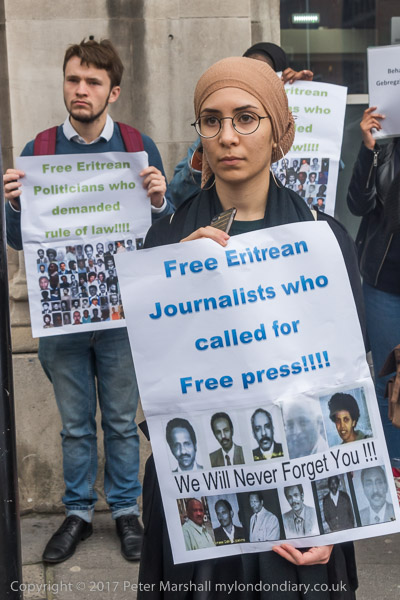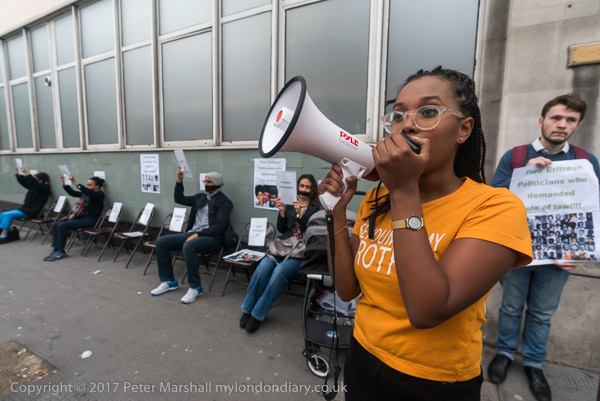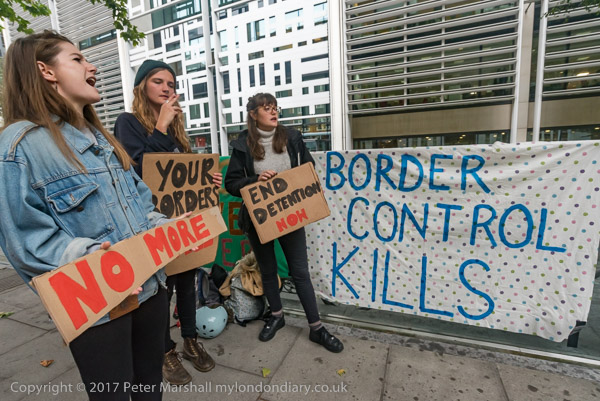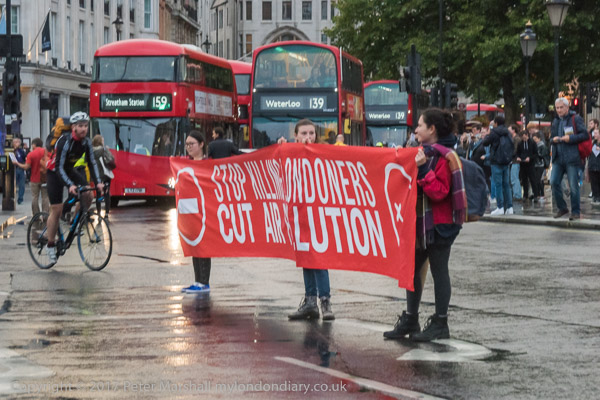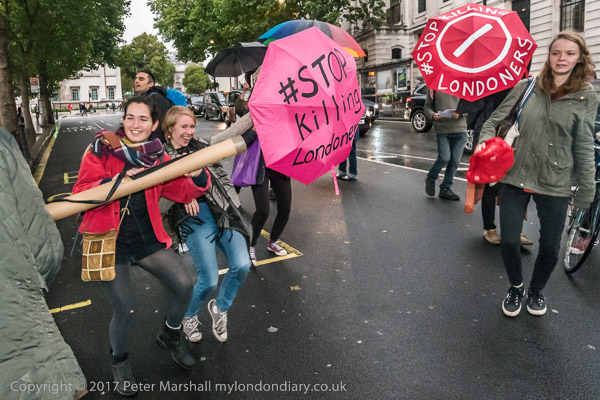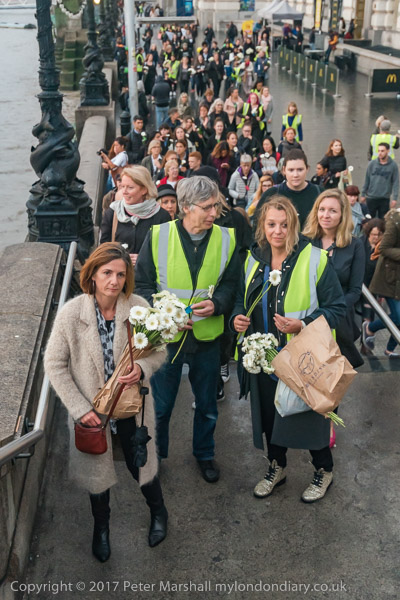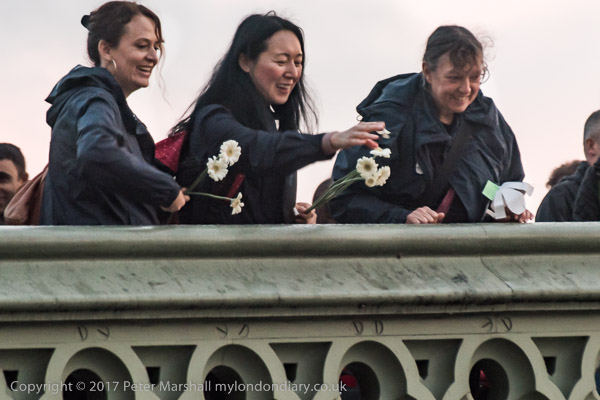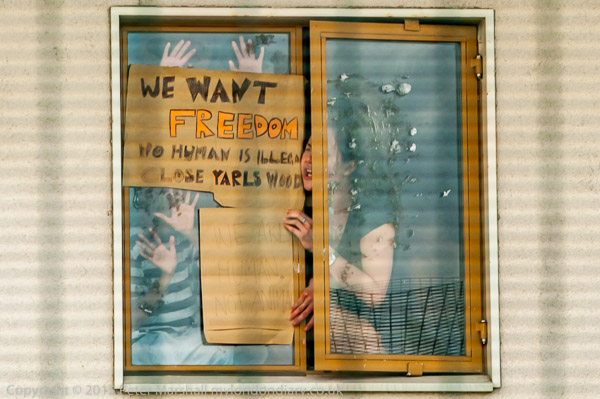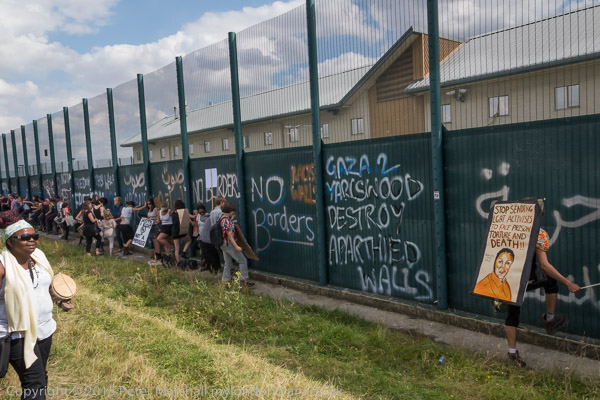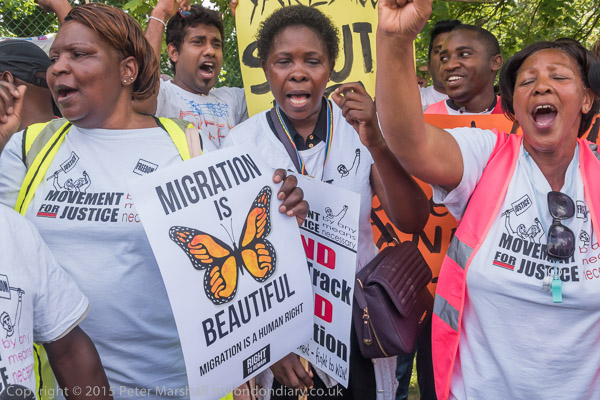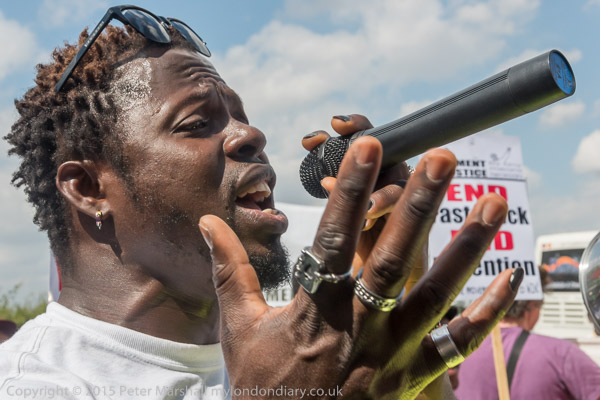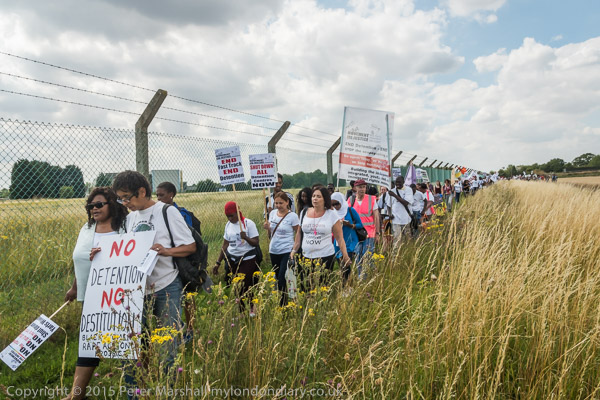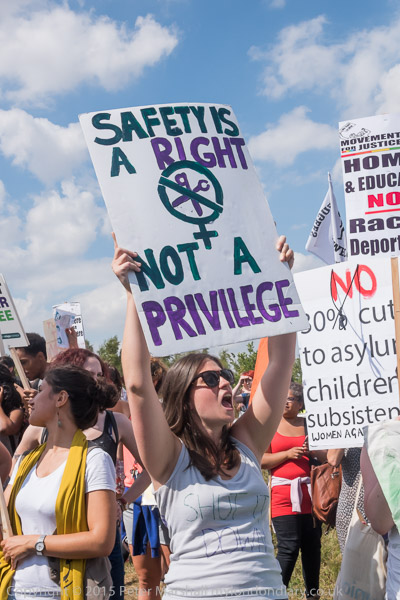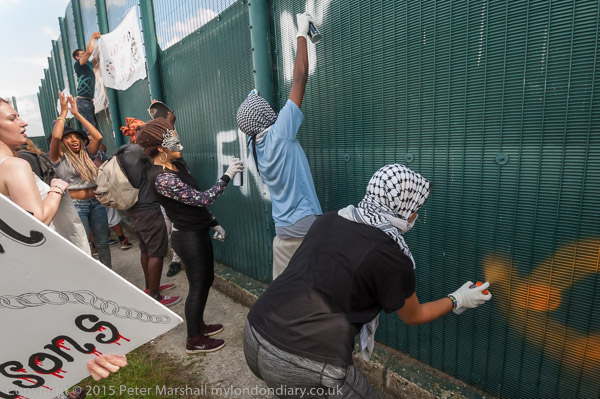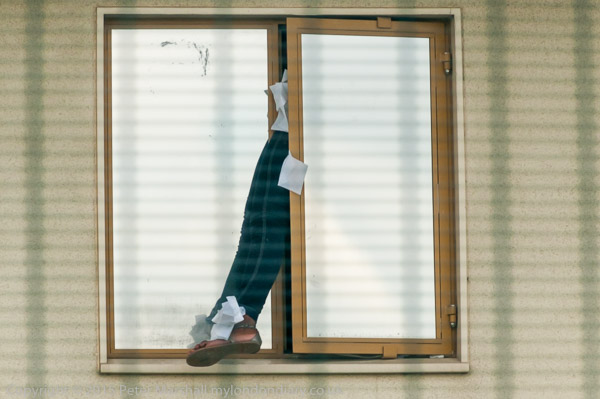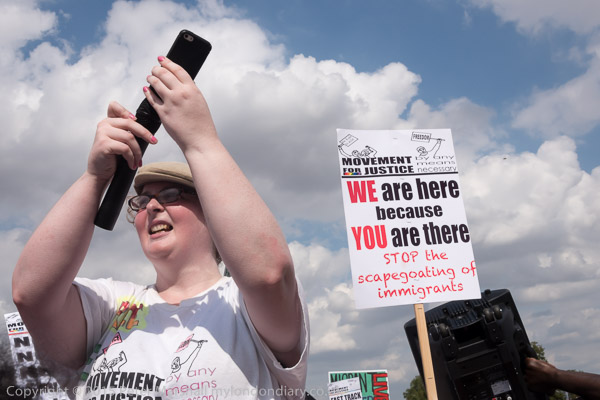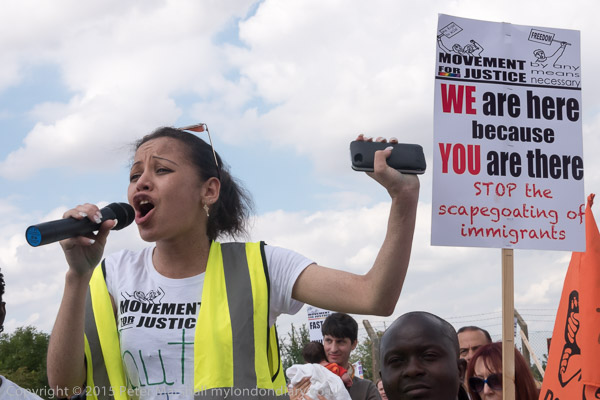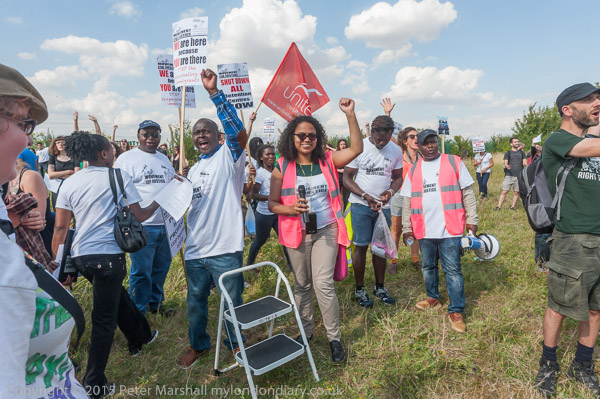Democracy, Black Cabs, Murad & Zionists – My agenda for Wednesday 2nd June 2010 was a busy one, with protests about democracy in Parliament Square, London’s Black Taxis at Aldwych, a picket at BP’s St James’s Square HQ, trade unionists protesting at the Turkish Embassy and Zionists supporting the Israeli attack and killings on the Gaza aid flotilla.
Democracy Village Protest – Parliament Square

People had been camping in the Democracy Village in Parliament Square for just over a month and a few of them had come across the road with banners to protest. They held up banners, including a large one saying ‘We Respect The Soldiers We Do Not Support The War‘ and another ‘We Demand Peace In Afghanistan and No More War‘ and several made speeches with a megaphone. Another very artistically written notice on a large square of cloth on the pavement read ‘With Each Conscious Breath May You Know How Loved You Are in All Ways. You Are Divine. Let Your Light Shine’.
Brian Haw – Summons Marks 9 Years in Parliament Square
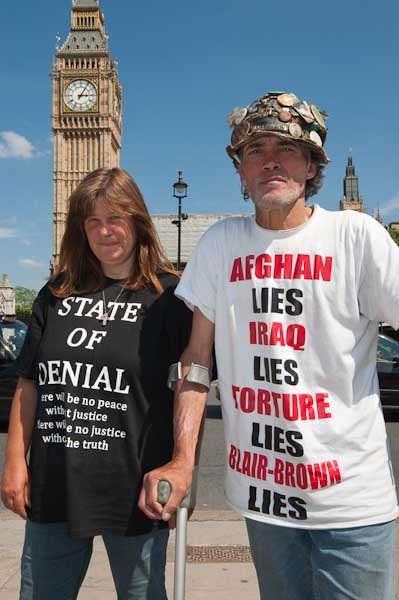
I went back to the other side of the road to talk with Brian Haw and Barbara Tucker who I had come to visit on the 9th anniversary of the start of Brian’s protest vigil opposite the Houses of Parliament in Parliament Square. A week ago they had been arrested and held for 30 hours on the day of the state opening of Parliament before the court released them on bail.
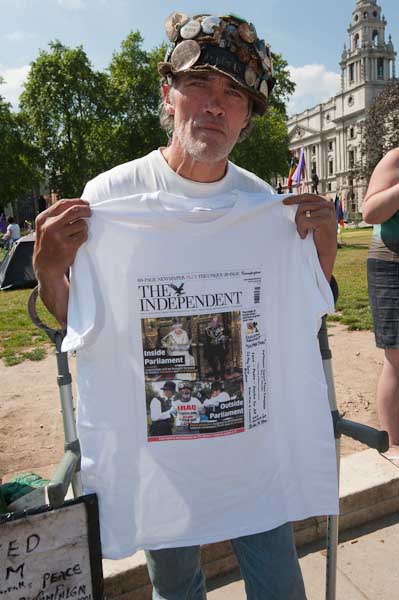
The arrest had come after Brian objected to police searching his tent in the early morning without a warrant – the 13th or 14th illegal search they have made, all part of a continual campaign of harassment. As we were talking we became aware of three police a few yards away standing and watching us. They then came over and served Barbara Ticker with a summons for using a megaphone in Parliament Square.
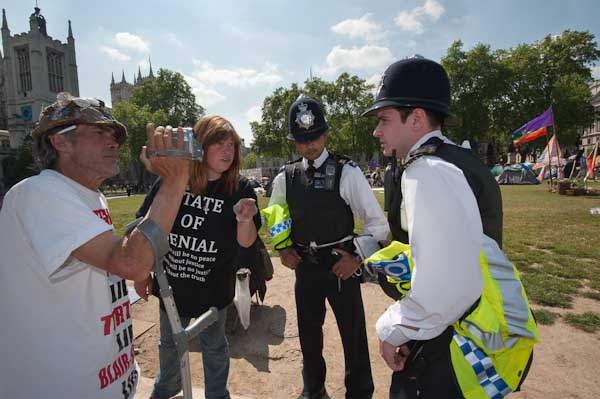
Brian and Barbara asked why she was being singled out for attention as there were at that time others In the Democracy Village actually using a megaphone and she was not at the time doing so. The officers made no attempt to answer this question.
BrianHaw – Summons Marks 9 Years
Black Cabs Protest – Aldwych
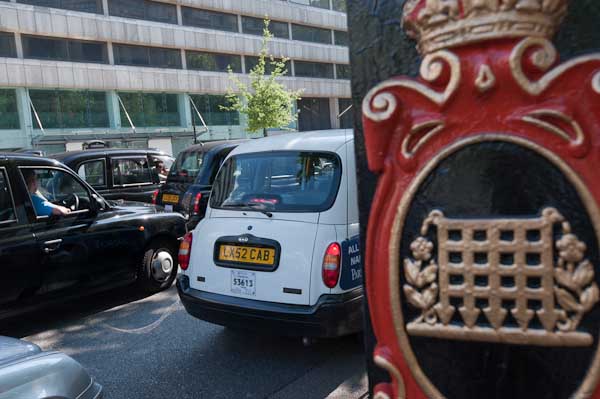
I don’t use taxis in London – or at least very seldom. I can only remember two occasions in the last thirty or so years, both when others insisted I go with them. It’s a wasteful, outdated and overpriced system which is responsible for much of the congestion in London, both by cabs carrying only small numbers of people compared to other public transport and also by ‘cruising for hire’ with no passengers on board.
My account on My London Diary gives some of their grievances, some of which I have some sympathy with, and I agree the police should be enforcing the law (rather than harassing protesters) but the whole system needs to be updated, taking into account the general availability of smart-phones and improvements in satellite navigation systems which increasingly make the ‘knowledge’ redundant and can provide real-time congestion information.
I didn’t find it an easy protest to photograph, which I think shows in the results. Lots of taxis are frankly rather boring, and not that unusual in London, where I commented that “While standing at a bus stop a couple of weeks ago I counted over 30 empty taxis going past before my bus arrived, and I couldn’t help but think we could have a better public transport system without taxis.”
BP Picket for Colombian Oil Workers – St James’s Square
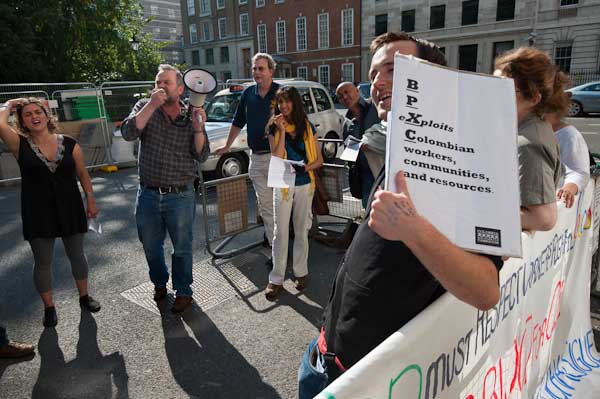
BP have a long-running dispute with the workers on the Cusiana oilfield in the Casanare department of Colombia, and its one where they are playing dirty, with union members accusing BP of carrying out a campaign of misinformation about what is happening in the plant, and in particular of falsely claiming the support of government officials for their lies about the action.
More or less as this picket was taking place, armed commandos from the Colombian army leapt over a security grid at the plant and attacked the workers who were carrying out a peaceful occupation of the Cusiana CPF (Central Processing Facility) in Tauramena.
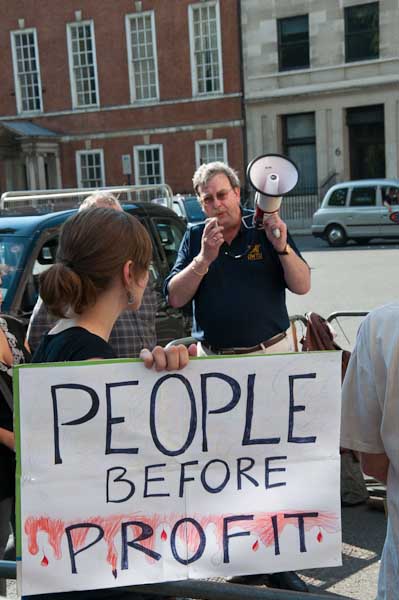
Previously BP had come to an out of court settlement on a UK High Court challenge over the pipeline from this oilfield to the coast, when farmers alleged that BP benefited from the actions of Colombian paramilitary forces who harassed and intimidated them in their protection of the pipeline. During the preparation of the case, of the lawyers for the farmers discovered she was on a death list and fled the country; she was granted political asylum in the UK.
The protest was organised by the Colombia Solidarity Campaign and was supported by the ICEM, the International Federation of Chemical, Energy, Mine and General Worker’s Unions, based in Switzerland which represents more than 20 million workers around the world, uniting trade unions in its sector around the world.
BP Picket for Colombian Oil Workers
Protest for Murad Akincilar Turkish Embassy, Belgrave Square

Trade unionist Murad Akincilar was arrested on a spurious charge of belonging to a terrorist organisation while on an extended holiday in Turkey last September and was in prison in Istanbul. His treatment in prison has resulted in serious eye damage and partial blindness. He was known personally to some of the protesters as he studied for a Masters Degree at the LSE, but since 2001 he has lived in Switzerland and worked for Swiss trade union Unia which was leading the campaign for his release.
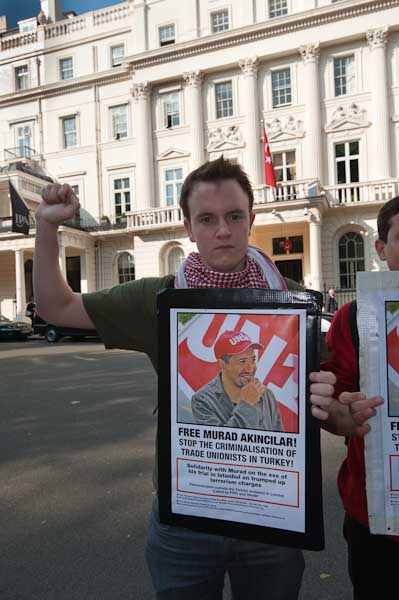
The protest opposite the Turkish Embassy was organised by Fight Racism! Fight Imperialism! and Gik-der, an organisation founded in north London in 1991 by migrants fleeing political and racial persecution in their home countries of Turkey and Kurdistan.
Zionist Federation Support Israeli Atrocity – Israeli Embassy, Kensington
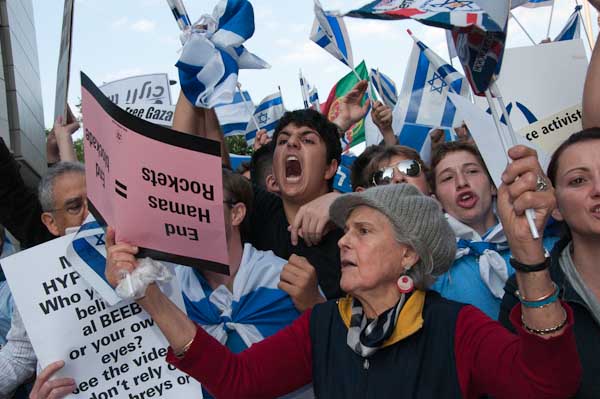
The Zionist Federation together with members of the English Defence League demonstrated opposite the Israeli embassy in support of the Israeli Defence Force killings in the attack on the Gaza aid flotilla.
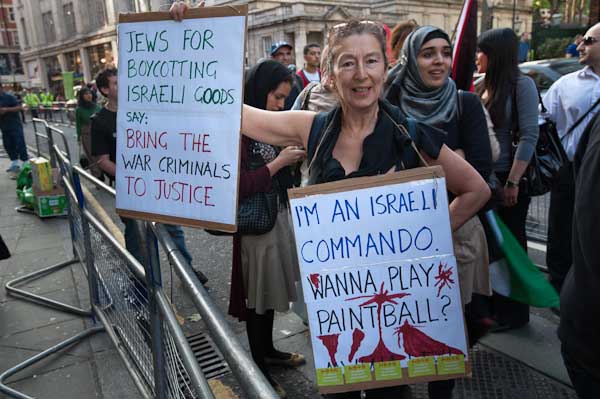
A smaller group of pro-Palestinian protesters had come to oppose them, although both the Palestine Solidarity Campaign and the Stop the War Coalition had decided not to support the counter-demonstration to avoid conflict.
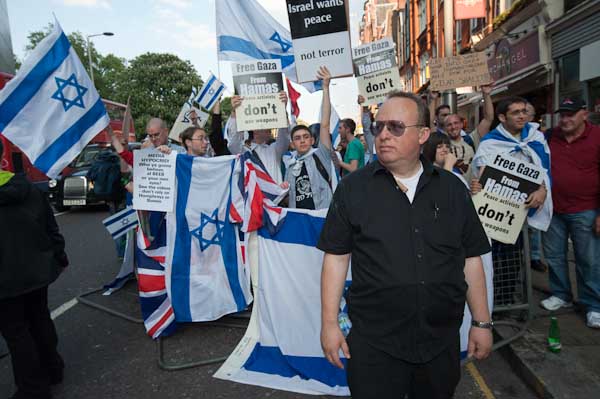
Although official Zionist sources had expressed some regret at the violence and loss of life, the mood of the supporters here appeared to be one of a gloating triumphalism that seemed entirely inappropriate to the situation. I was “sickened when at one point a large group of the demonstrators began chanting ‘dead Palestinian scum’ ” and appalled to find this was “a demonstration jointly with the Zionist Federation and the English Defence League, some of whose members many of us have seen and heard chanting racist slogans on our streets. It seems unbelievable that a Jewish organisation should align itself – even if unofficially – with people like this.”
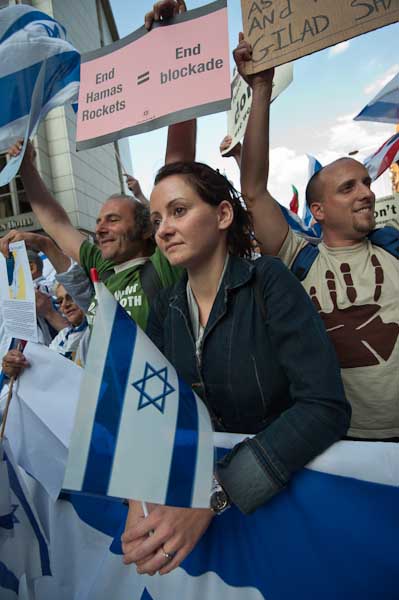
Attempts to justify the summary execution of one of the victims by shots to the head at close range by the existence of so-called weapons on the ships seemed insulting – almost all those shown in the photographs are “exactly the kind of tools that would be expected to be found on any ship in its galley and for general maintenance, as well as items being taken for building work in Gaza. The possible exceptions are a few canisters of pepper spray, some catapults and what looks like some kind of ceremonial knife.”
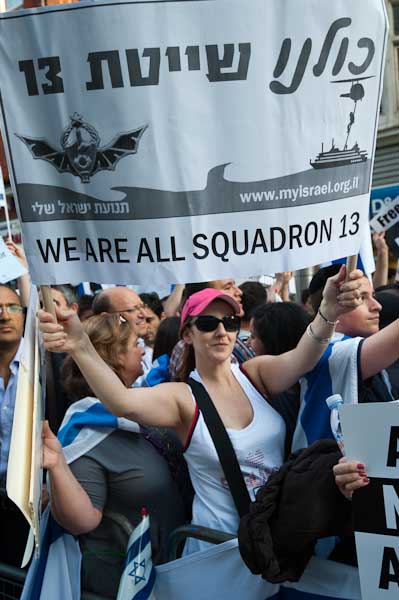
I’m very much in favour of peace in Palestine and Israel, but like many I feel “the actions of the state of Israel in their attacks on Gaza, their disruption of everyday life for the Palestinians and the blockade is making the possibility of peace much more distant… Like other conflicts, resolution depends on winning hearts and minds and this can’t be done with tanks and bulldozers.”
Police had to step in at the end of the protest when four press photographers were surrounded and chased by a an angry group of threatening Zionist demonstrators but all I suffered were a few threats and hostile gestures.
Zionist Federation Support Israeli Atrocity
